How Long Does Uncooked Quinoa Last
Your uncooked quinoa can last 2-3 years when you store it properly in an airtight container at room temperature (50-70°F). You'll want to keep it in a cool, dry place like your pantry or kitchen cabinet to prevent moisture and temperature fluctuations from causing spoilage. Watch for signs of deterioration such as mold, unusual odors, discoloration, or clumping, which indicate it's time to discard the quinoa. Using proper storage containers with rubber gaskets and dividing bulk quantities into smaller portions can help extend its shelf life. Understanding the best storage methods and container options will guarantee your quinoa maintains its quality for years to come.
This post may contain affiliate links. If you make a purchase through these links, I may earn a commission at no additional cost to you. Additionally, portions of this post may be generated using artificial intelligence (AI) technology. While we strive for accuracy, please be aware that AI-generated content may not always be perfect and should be fact-checked when necessary.
The Spatula Scoops
- Properly stored uncooked quinoa maintains quality for 2-3 years in airtight containers at room temperature (50-70°F).
- Commercially packaged quinoa has extended shelf life when unopened due to specialized processing and packaging methods.
- Refrigeration can extend quinoa's lifespan up to 2-3 years, especially in humid climates.
- Signs of spoilage include mold, unusual odors, discoloration, clumping, or pest presence.
- Store quinoa in airtight containers in cool, dry places away from direct sunlight to maximize shelf life.
Understanding Quinoa's Natural Shelf Life
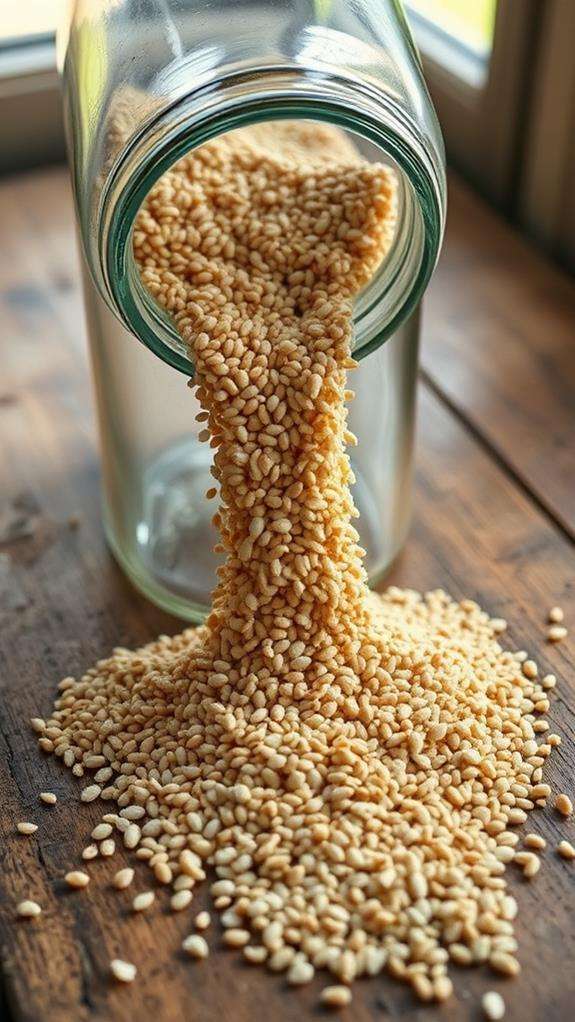
Understanding quinoa's shelf life starts with recognizing its natural durability as a seed. Like other seeds and grains, quinoa's been designed by nature to withstand extended periods of storage, making it an incredibly stable pantry staple when kept under proper conditions.
In its uncooked form, you'll find that quinoa typically maintains its quality for 2-3 years when stored in an airtight container at room temperature. You're looking at even longer shelf life if you've purchased commercially packaged quinoa, which often comes with specialized packaging to prevent moisture and oxygen exposure. The natural compounds in quinoa, including saponins and various antioxidants, help protect it from rapid deterioration.
You'll want to pay attention to several factors that influence quinoa's longevity. Temperature fluctuations, humidity levels, and exposure to direct sunlight can greatly impact its shelf life. When you store your quinoa in a cool, dry place between 50-70°F (10-21°C), you're creating ideal conditions for preservation. If you've got access to vacuum-sealed containers or moisture-proof storage bags, you're setting yourself up for maximum storage potential.
Proper Storage Methods
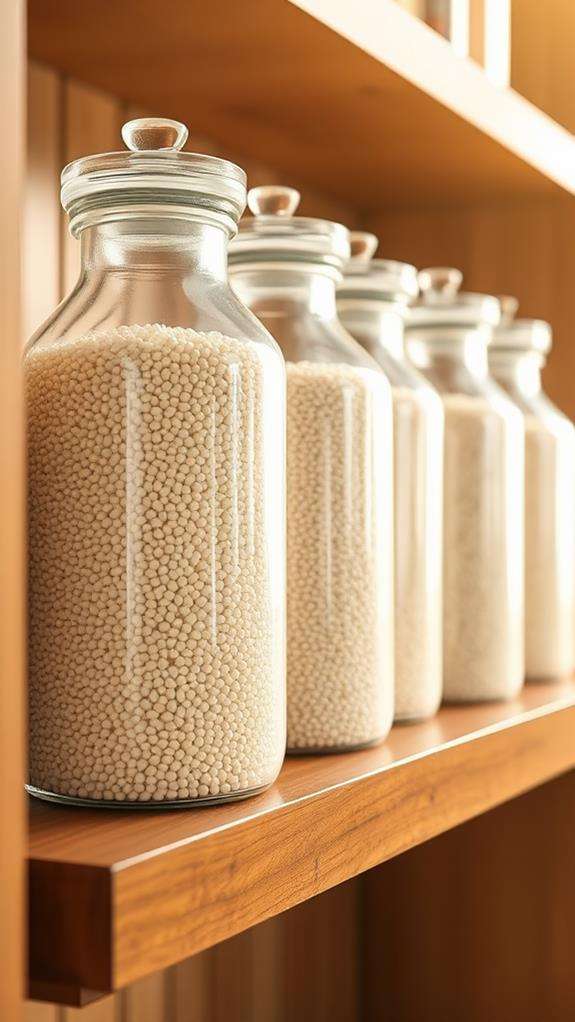
Storing quinoa correctly makes all the difference in preserving its quality and preventing spoilage. You'll want to keep your uncooked quinoa in an airtight container, away from moisture, heat, and direct sunlight. The best storage locations include your pantry, kitchen cabinet, or any cool, dry place in your home.
| Storage Method | Pros | Cons |
|---|---|---|
| Glass Container | Airtight seal, visible contents | Breakable, more expensive |
| Plastic Container | Lightweight, durable | May retain odors, less sustainable |
| Original Package | Convenient, space-saving | Not ideal once opened |
| Vacuum Sealed | Maximum freshness, compact | Requires special equipment |
Once you've chosen your storage container, make sure it's completely clean and dry before transferring your quinoa. If you're buying in bulk, consider dividing your quinoa into smaller portions to minimize exposure to air and moisture each time you access it. Don't forget to label your containers with the purchase date, which will help you track freshness. For best results, maintain a storage temperature between 50-70°F (10-21°C) and check periodically for signs of moisture or pest infiltration.
Signs of Spoiled Quinoa
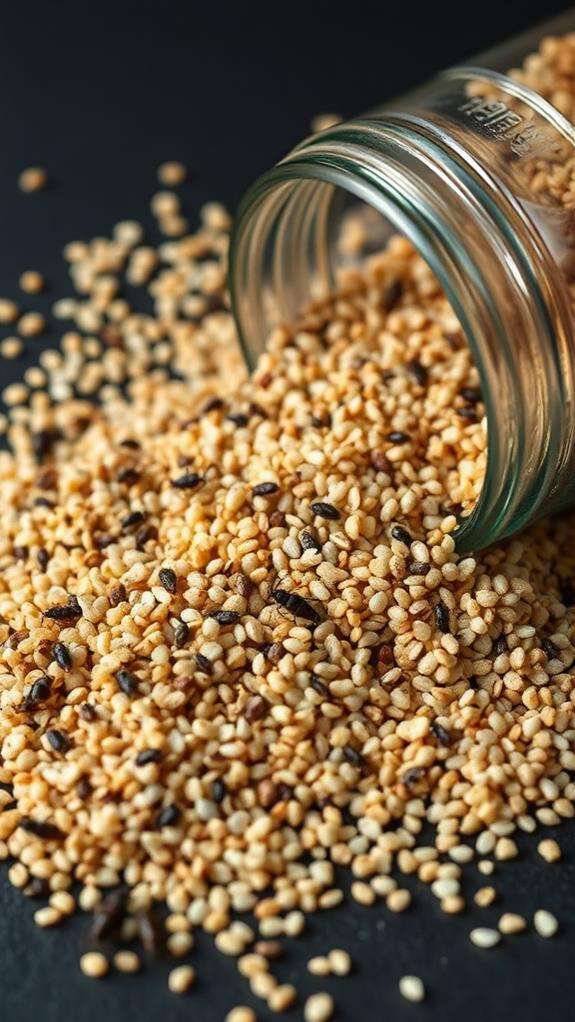
Safety depends on your ability to recognize when quinoa has gone bad. When you're examining your stored quinoa, you'll want to look for several key indicators of spoilage. If you notice any signs of mold, which typically appears as green, black, or white spots, you should discard the quinoa immediately.
Check for unusual odors, as fresh quinoa should have a mild, nutty scent. If you detect any musty, sour, or rancid smells, your quinoa has likely spoiled. You'll also want to inspect the color of your quinoa – it should maintain its natural pale beige or reddish hue, depending on the variety. Any discoloration or darkening suggests deterioration. Additionally, examine the texture of the grains. They should be dry and separate easily; if they're clumping together or feel moist, there's likely moisture contamination.
Don't forget to check for any signs of pest infestation, such as small holes in the packaging, webbing, or the presence of insects and larvae. If you spot tiny moths or beetles in your quinoa, you'll need to dispose of it, as these pests can quickly spread to other pantry items.
Extending Your Quinoa's Longevity
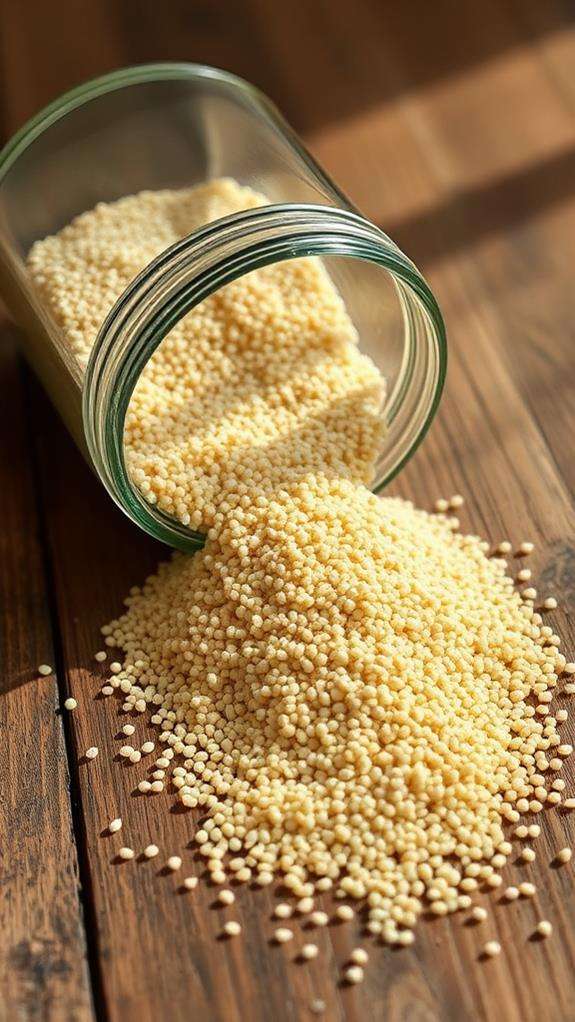
To maximize your quinoa's shelf life, proper storage techniques are essential. You'll want to keep your uncooked quinoa in an airtight container, preferably made of glass or food-grade plastic, to prevent moisture and insects from compromising its quality. Store the container in a cool, dark place where temperatures remain consistently between 50-70°F (10-21°C).
If you've purchased quinoa in bulk, consider dividing it into smaller portions for daily use while keeping the main supply sealed. You can use vacuum-sealed bags or moisture-proof containers with tight-fitting lids to maintain freshness. Don't forget to label your containers with purchase dates, which will help you track the quinoa's age and use older stock first.
For extended storage periods, you might want to add oxygen absorbers or food-grade desiccant packets to your storage containers, as these will help prevent moisture accumulation and oxidation. If you live in a humid climate, consider storing your quinoa in the refrigerator, where it can last up to 2-3 years. Remember to always check for signs of moisture when transferring quinoa between containers, as dampness can quickly lead to spoilage.
Best Storage Containers
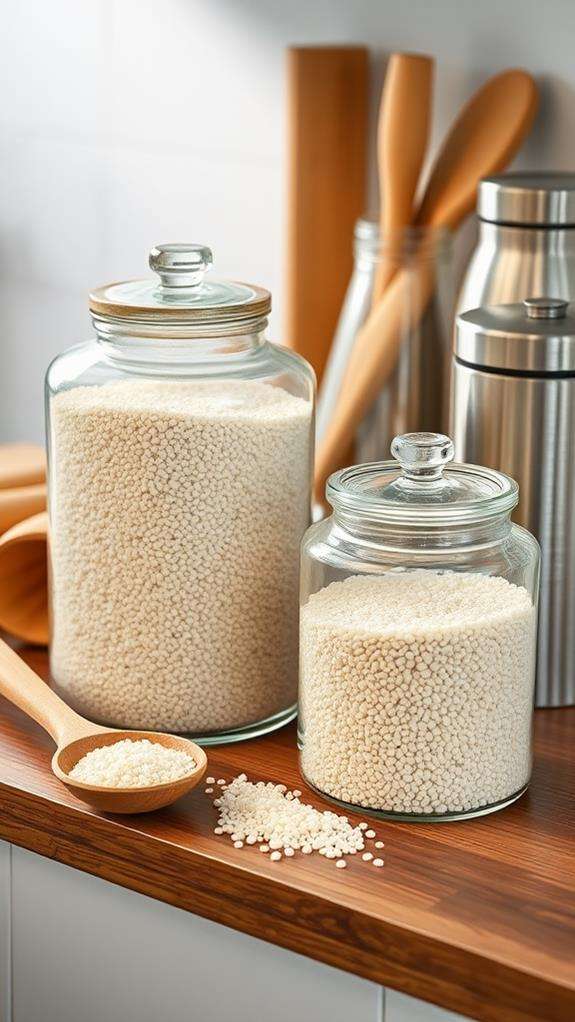
The right storage container can make all the difference in preserving your quinoa's freshness. You'll want to choose airtight containers made from either glass or BPA-free plastic, which provide excellent protection against moisture, insects, and unwanted odors. Mason jars with secure lids, food-grade plastic containers with snap-on lids, and vacuum-sealed containers are all excellent options for storing your quinoa.
When selecting your storage container, you'll need to reflect on a few key features. Look for containers with rubber gaskets or silicone seals that create an airtight barrier, and make sure the lid fits securely without any gaps. If you're storing large quantities, opt for wide-mouth containers that make scooping easier and allow better access for measuring cups. Multi-sized container sets can be particularly useful if you buy quinoa in bulk and want to divide it into smaller portions.
For maximum effectiveness, confirm your containers are completely dry before adding quinoa, and avoid containers that have held strong-smelling foods previously, as quinoa can absorb these odors. Clear containers are preferable as they allow you to monitor your quinoa's condition easily.
Frequently Asked Questions
Can Uncooked Quinoa Be Frozen to Make It Last Longer?
You don't need to freeze uncooked quinoa, as freezing won't extend its shelf life beyond its already impressive storage capability. When stored properly in an airtight container at room temperature, quinoa can last 2-3 years. Instead of freezing, focus on keeping your quinoa in a cool, dry place away from direct sunlight. If you're concerned about freshness, you'll want to check for any signs of moisture, unusual odors, or insects.
Does Rinsing Quinoa Before Storage Affect Its Shelf Life?
Just like washing an apple removes its natural protective coating, rinsing quinoa before storage isn't recommended. You'll want to keep quinoa dry until you're ready to cook it. If you've already rinsed your quinoa, you must dry it thoroughly before storing, as moisture can lead to mold growth and spoilage. Properly dried, rinsed quinoa won't have a markedly different shelf life, but it's best to store quinoa unwashed until cooking time.
Is Quinoa From Different Regions Known to Have Varying Shelf Lives?
While quinoa's origin doesn't considerably impact its shelf life, you'll find that storage conditions matter more than regional differences. Whether your quinoa comes from Peru, Bolivia, or other growing regions, it'll typically last 2-3 years when stored properly. What's most important is that you're keeping it in an airtight container, away from moisture and heat. Some slight variations might occur due to processing methods, but they're minimal.
Can I Store Different Colored Quinoa Varieties Together in One Container?
You can store different colored quinoa varieties together, but it's not always ideal. While they'll stay fresh for the same duration, mixing them can make it harder to measure specific varieties for recipes that call for a particular color. If you do combine them, guarantee your container is airtight and clean. For best organization and cooking flexibility, you might want to keep white, red, and black quinoa in separate containers.
Does Altitude or Humidity Affect How Long Quinoa Stays Fresh?
You'll find that both altitude and humidity greatly affect your quinoa's shelf life. In high-altitude areas, where the air's thinner, you'll want to store your quinoa in airtight containers to prevent oxidation. High humidity can be especially tricky, as it can lead to moisture absorption and potential mold growth. You'll need to keep your quinoa in a cool, dry place with humidity levels below 60%, and consider using moisture-absorbing packets in particularly humid climates.





